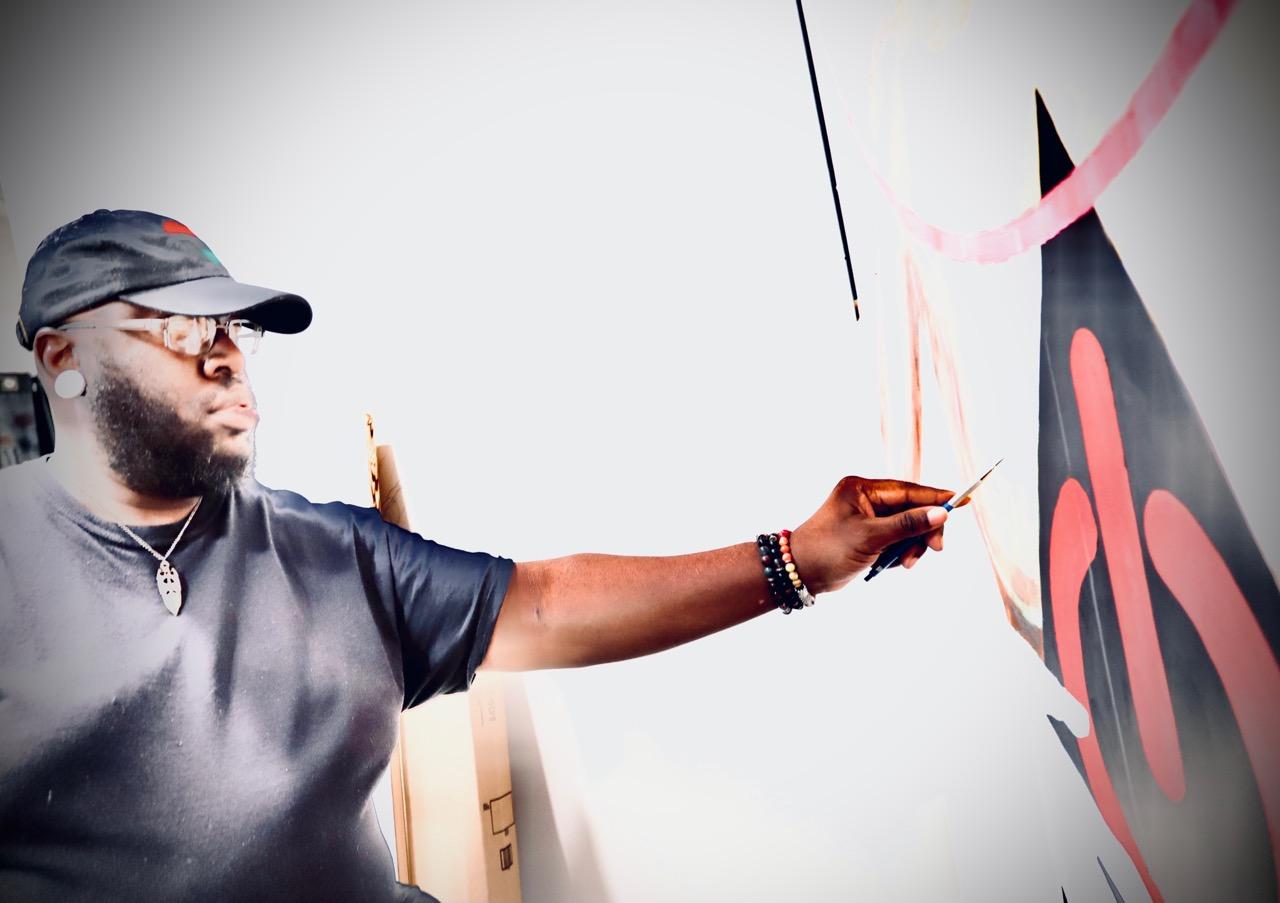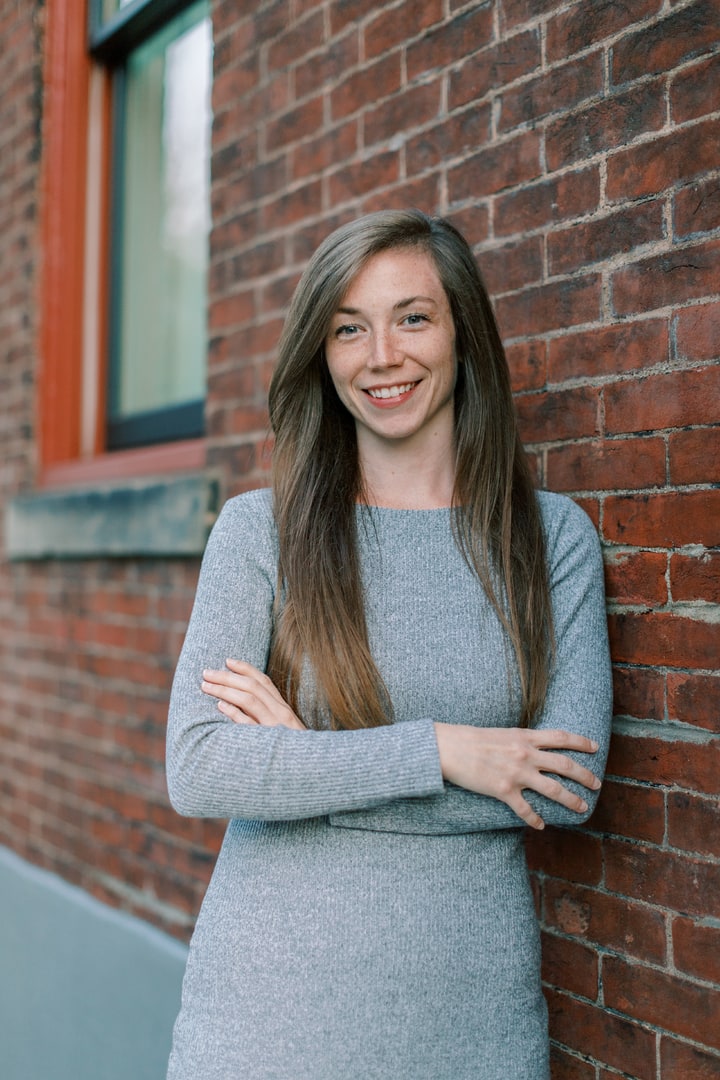Cover photo courtesy James Prude Photography
Driven by purpose, self-taught visual artist Natiq Jalil creates impactful pieces most often highlighting the strength of Black people, challenging racial, societal, and gender norms. His mixed-media art, with an emphasis on watercolor, has been displayed in countless venues and galleries in multiple cities, many he’s traveled or lived in. Locally, you can find his work at Redfishbowl Studios, The Ohringer, and in the Cultural District.
Natiq has been part of murals on the Black experience and is the founder of The Coloured Section Black Artists’ Collective, a brainchild of the late artist and Natiq’s mentor George Gist, that are on display at 820 Liberty Ave. downtown.
He and his wife Crystal Noel Jalil, who is a jewelry maker and spoken-word poet, work together on ventures throughout Pittsburgh and host “Amplified,” a monthly open mic and live art series at The Ohringer in Braddock.
On top of being a notable visual artist, Natiq spends time writing poetry, sci-fi and crafting jewelry – like his signature faux gauges (or gauges that don’t stretch your ears).
We chatted with Natiq, who took us through his creative journey and life as an artist.
Taylor Fowler: You’re from Montgomery, Alabama, and have lived in a number of cities, including New York. How did you decide Pittsburgh was home?
Natiq Jalil: “While I was living in New York, I came back for three shows I was supposed to just do in one month, then head back.
But during that month, I became close with (his would-be mentor) George Gist, started dating Crystal, and had a live painting with Redfishbowl (a grassroots artist collective that later accelerated his success in Pittsburgh) and I was having fun.
All of a sudden, I had been here for three months and had some decisions to make.”
TF: How long have you been practicing art?
NJ: “If you ask my mom, she would tell you there wasn’t a time I wasn’t making art. I’ve been drawing since the moment I got my hands around a crayon. It wasn’t until I had my first successful show in Pittsburgh (a 2013 show at Garfield Artworks called “Unfinished Business”) that I really found my style, and that’s when things took off.”
TF: How do you describe your style?
NJ: “It’s not minimalist, but it leaves space for interpretation. I allow myself the freedom to move around my paintings and literally stop once I feel good with where it is.
I also describe it as Afrofuturism. At first, I was just happy I arrived at a style comfortable to me. But the more I knew what was going on in the country and world, making pretty pictures wasn’t enough. I needed to stand for something. So, the style I came to love was the Afrofuturism that brought to life everything I stand for.”
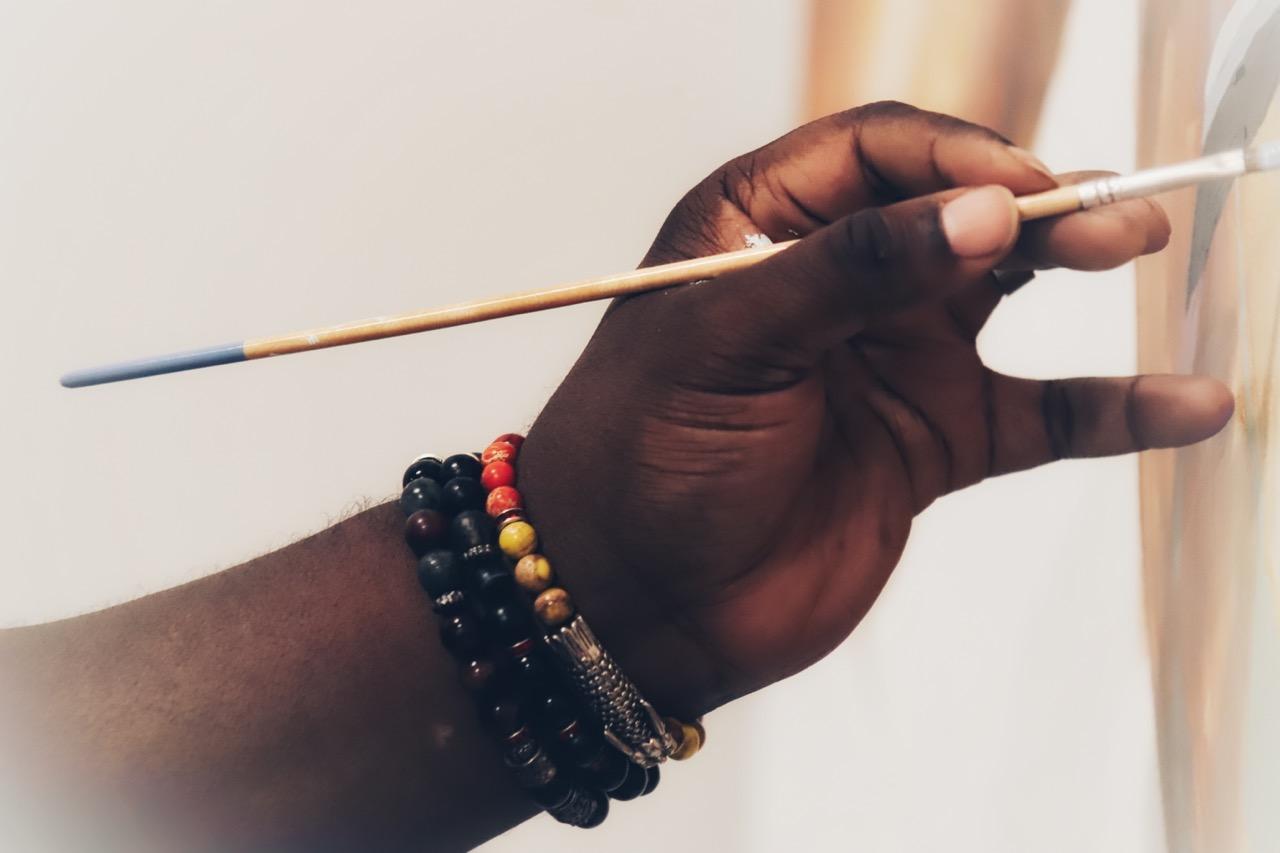
TF: What mediums do you work in?
NJ: “Primarily watercolor, acrylics and oils. However, I often mix them up and add other things as it feels right. Sometimes I’ll add collage, sometimes I’ll start writing poetry. Sometimes I’ll use ink, graphite, charcoal – anything that feels good to get the point across.”
TF: What is your creative process?
NJ: “I start off with doodles. I like to be as free as possible and not stop until I get what’s in my mind, out. I often do a single line and don’t lift my pen or pencil from the paper. It looks like scribbles initially, but then all of a sudden there’s a face. Then shapes. Then technological stuff like power signs. I just let my hand move and create, and sometimes I do that 3 or 4 times before I arrive at what I want my final piece to be.
It’s not just the painting, it’s the music I listen to, too. I have different playlists and when I start a piece, I take note of what playlist I was listening to so I can get back into it. I allow my feelings of the moment to just overwhelm the piece.”
TF: You’re entirely self-taught. What motivated you to hone your skills and pursue art seriously?
NJ: “My military dad was very strict and had his thoughts about success. He liked that I was able to draw, but he did not want me to be an artist.
I was pretty much forbidden from learning how to do more with art, so I would draw on anything around me. Lined paper notebooks, cardstock; whatever I could find. If I wanted to do art, I had to teach myself and keep it a secret.
My dad told me I wouldn’t be successful because I never finished anything. I leave spaces on my pictures. I used to try and fill up canvases completely and I hated my work. That influenced me for a long time.
I was sick of sitting in front of canvases stressed out, so I decided to intentionally do a show where I did not finish anything and call it ‘Unfinished Business.’”
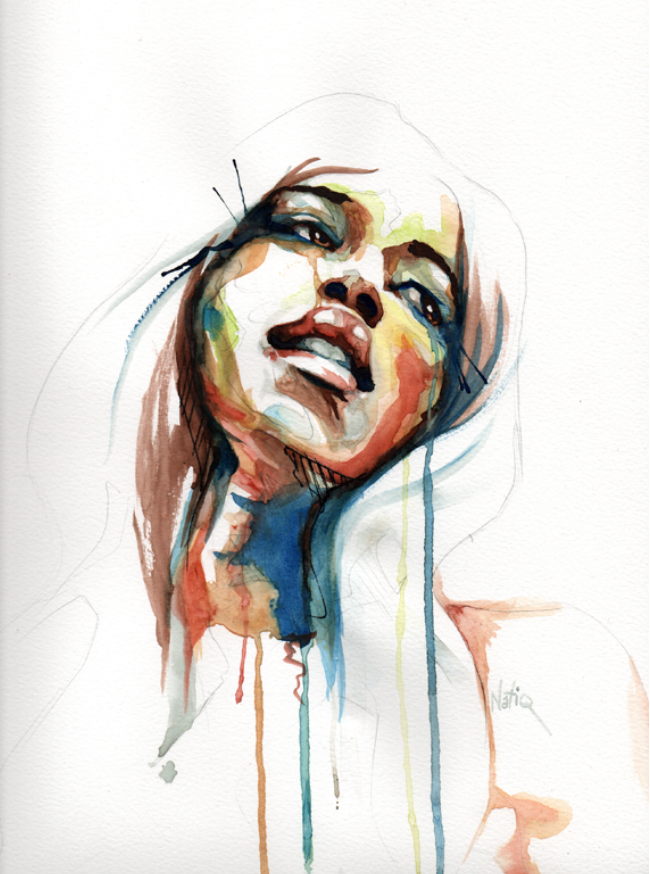
TF: Tell me about “Unfinished Business.”
NJ: “I’d call galleries and say, ‘Hey, I’m looking to do a show where I intentionally don’t finish anything,’ then *click.*
Garfield Artworks (since closed) agreed to it, so I set out to do this experimental show. I didn’t cover up my mistakes. I didn’t cover up my lines, drips, or splatters. I left all of it there for the world to see and people went nuts over it. It became my first successful show and I’ve been working ever since.”
(From there, Natiq shared he also did a successful show with RAW that led him to move to Manhattan.)
“In New York, I lived in an apartment the size of a postage stamp with no studio, so I started painting on trains and subways. Nobody looks at each other on the train, so I would paint people sitting across from me and I had to move quickly. That turned into a video series called Train of Thought. Prints of that work still sell to this day.
Once I started doing work in NYC, that’s when Pittsburgh started calling again.
And one time I got a call about a new thing starting called Redfishbowl.”
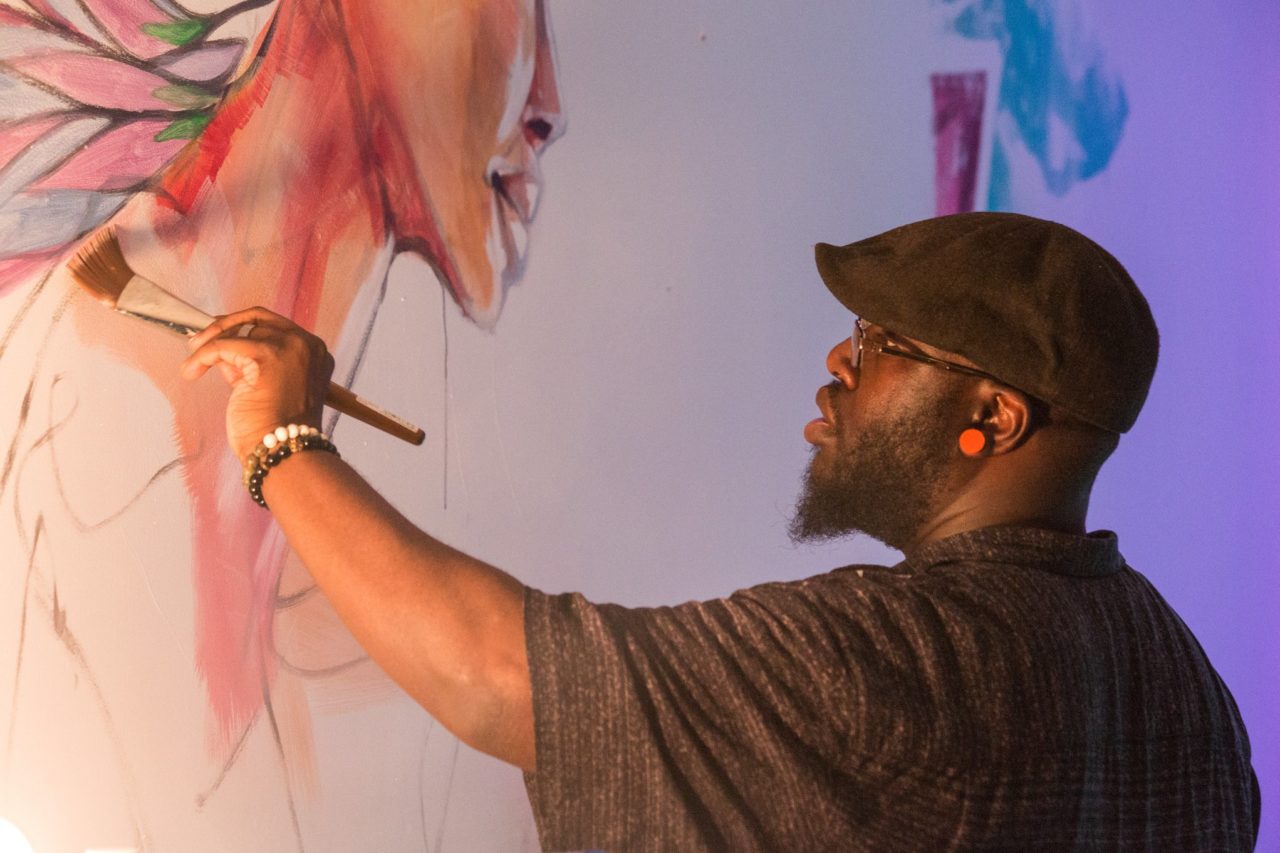
TF: What happened next with you and Redfishbowl Studios?
NJ: “I got this call and they said to come to Pittsburgh and bring whatever art I want and they’ll hang it on the walls at Delanie’s Coffee, and there’s going to be music and all these other things, like a festival. I hopped on a MegaBus from New York and while on the bus, the person sitting next to me bought all three of my paintings.
So I got to Pittsburgh with no paintings and I sat in Delanie’s Coffee and started doing my new painting live there. This guy named Chris Boles asked to take pictures of me. I didn’t know at the time he was the one running Redfishbowl, and from meeting him, that became my way back and forth to Pittsburgh. It was me and Redfishbowl.
Fast forward and Redfishbowl Studios got a physical location. Chris invited me to check out the space and roped me into working with them, and opportunities started to come.”
(You can visit Redfishbowl Studios upstairs at 4327 Butler Street in Lawrenceville to find the work of Natiq and many other artists on display and for sale.)
TF: Earlier, you said your art represents what you stand for. What do you stand for?
NJ: “I believe all marginalized people should have a fair shot. I believe, especially in this country, Black and Native people have had a really unfair shake. More than anything else, I want to create art that represents them, especially Black people because that’s the culture I grew in.
I see a lot happen in Pittsburgh and everywhere I’ve traveled and most of it is not good. I see a lot of hope, but we need to be vigilant. My art is part of that vigilance and taking over narratives often turned against us. My art is the voices I hear around me. It’s not just about my voice anymore, it’s about all of us.”
(Natiq shared that he really leaned into his message around the time of the Black Lives Matter protests. He painted a powerful and “a little bit controversial” mural he believed represented the times and his work standing for something. He was also part of the Black AF mural on Spirit in Lawrenceville, a mural representing Black love at Carrie Furnace, and (alongside Crystal) part of painting the BLM mural Downtown.)
TF: Who inspires you in Pittsburgh?
NJ: “Definitely Chris Boles (founder of Redfishbowl Studios). Since the beginning, he has been a strong supporter of my work and his energy just gets you going.
Also, George Gist, who became my mentor. I had three paintings in a show at The Frick called “Black Voices in the Arts,” where I met George. He asked me to see his work and I was blown away. I knew the artist that I wanted to be at that point.
He said he wanted to leave me his legacy and he taught me everything I know.
In 2020, he passed under mysterious circumstances before I had a chance to show him how I would utilize it. I was devastated. It became my mission to make sure everything he taught me went out into the world. He left me his work and even a few unfinished pieces that he wanted me to finish. I’m still emotional when I look at them.
He told me about the idea he had called The Coloured Section Black Artists’ Collective. To honor his legacy, I started meeting with like-minded artists at Redfishbowl (before finding their current home at The Ohringer) about how to build it.”
TF: Tell me what happened next with The Coloured Section Black Artists’ Collective.
NJ: “George Gist wanted to change the competition happening among Black artists in Pittsburgh. He felt that as long as artists knew each other, artists should never be without work and I agreed.
I don’t think just one group can fix systemic problems, but I do think we can help.
We didn’t approach it as doing a random show at a random place. We wanted this to be big. We started teaching everything we knew and made a proposal for An<says>tors, our first big show idea that venerated our own ancestors. It caught the attention of the Pittsburgh Cultural Trust and we opened as part of the first gallery crawl in over a year since the pandemic. There was no Black content whatsoever, so they were ecstatic to have us. We landed at 820 Liberty Ave. and worked super hard to make it successful. It worked.”
The Coloured Section received an invitation from the Cultural Trust to continue displaying. They’ve displayed both “An<says>tors” and “InVisible,” an exhibition centered on mental health from the Black perspective, with more to come.
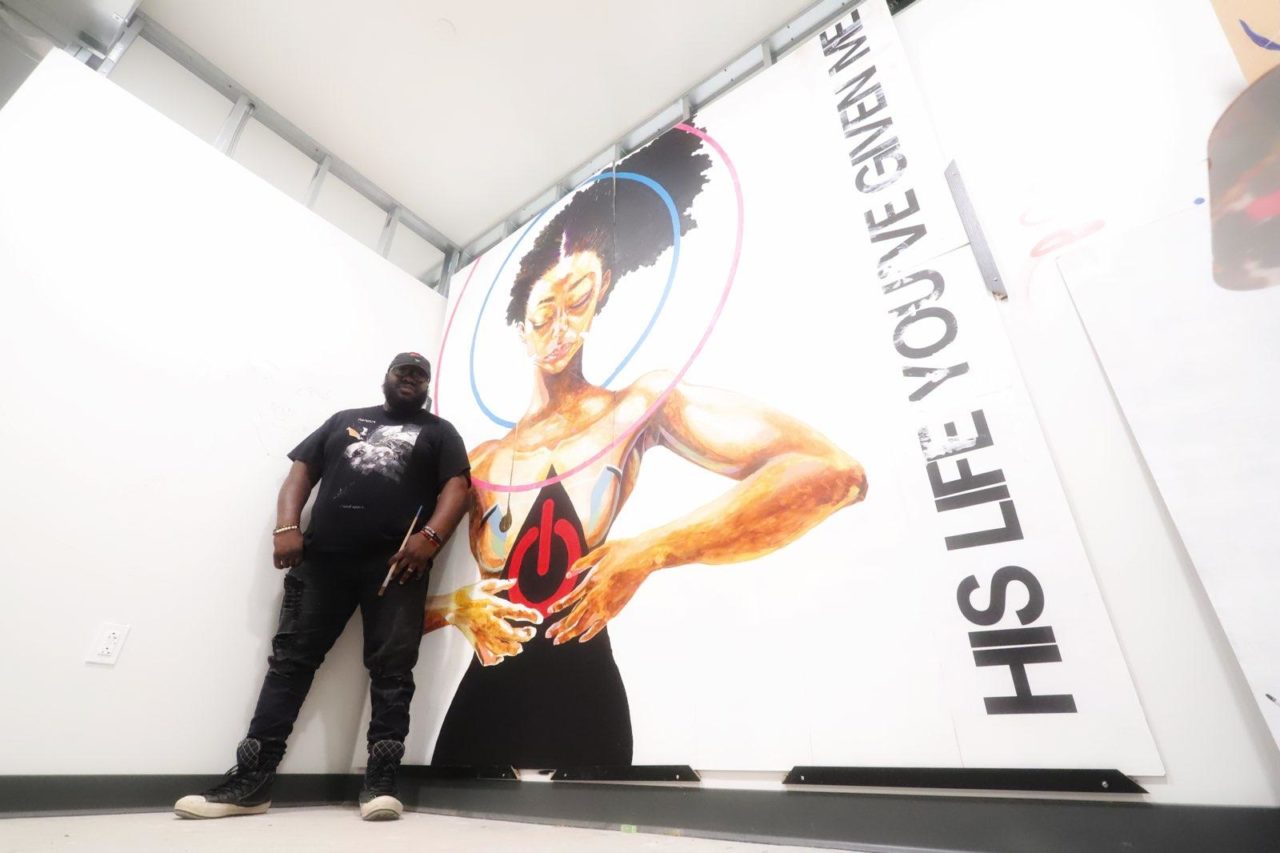
TF: If you had to say one thing to a Pittsburgh artist seeking to make a career in art, what would it be?
NJ: “Your first and foremost responsibility is to make sure that you show everyone the art that you do – everyone you can. Sounds like common sense, but it’s not. A lot of us sit on our art. A lot of us are scared and we don’t think it’s good enough. If you want to make a career at it, it’s rarely about what you think. We’re rarely pleased by our own art.”
TF: Looking back on your journey, did you think you would be here now?
NJ: “When people say, ‘I am my ancestors’ wildest dreams,’ I would modify that to say I am my own wildest dream at this point. I didn’t think I would be here and it’s still staggering.”
TF: If you had to show someone from out of town around Pittsburgh, where would you take them?
NJ: “Redfishbowl Studios, Brassero Grill in Braddock (the guacamole is phenomenal – I want to swim in a tub of it), for a ride on the incline, and to one of my exhibits downtown on Liberty Avenue.”
See all of Natiq’s past art and available work at artofnatiq.com. Connect with him on Facebook, Instagram and TikTok at Art of Natiq. You can also find his work on display at 820 Liberty Ave. downtown or Redfishbowl Studios in Lawrenceville.

